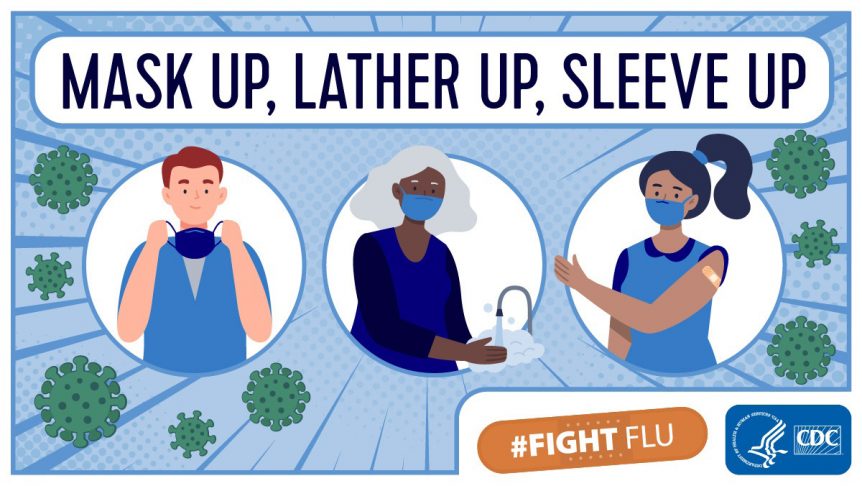Health and Welfare Alert
October 2020 #31-10-20
This year, it is more important than ever to protect yourself and those you care for from getting Influenza (flu). The best way to prevent the flu is to get the vaccine.
The Centers for Disease Control and Prevention (CDC) recommends getting a flu vaccine as soon as possible due to the COVID-19 pandemic. Experts fear people may get infected with both the flu and COVID-19 at the same time. While CDC recommends getting flu shots before the end of October, getting a late flu shot can be better than not getting one at all. The flu vaccine is the single best way to prevent the flu and any related complications.
Ohioans with developmental disabilities may be at a higher risk for the flu due to chronic lung conditions like asthma, emphysema, and chronic bronchitis. The risk of aspiration may be increased due to difficulty swallowing, gastroesophageal reflux disease, seizure disorder, tube feeding, cerebral palsy, and suppressed or absent cough or sneeze reflex.
Please make a plan to ensure that everyone who is able receives the flu vaccine early. If you need assistance finding where to obtain the flu vaccine, you can contact the medical provider, the county board QA Nurse, your local health department, or search Vaccine Finder for availability in your area. Free vaccines are offered by some health departments, insurance plans, and pharmacies.
How Flu Spreads
Most experts believe flu viruses spread mainly by tiny droplets made when people with the flu cough, sneeze, or talk. These droplets can land in the mouths or noses of people who are nearby. Less often, a person might get the flu by touching a surface or object that has the flu virus on it and then touching their own mouth, nose, or eyes.
Flu Symptoms
The flu can cause mild to severe illness and, at times, can lead to death. The flu is different from a cold. The flu usually comes on suddenly. People who have the flu often feel some or all of these symptoms:
- fever* or feeling feverish/chills,
- cough,
- sore throat,
- runny or stuffy nose,
- muscle or body aches,
- headaches,
- fatigue (tiredness),
- and some people may have vomiting and diarrhea, though this is more common in children than adults.
*It’s important to note that not everyone with flu will have a fever. If someone is exhibiting these symptoms, please contact their doctor.
Prevention Tips
• stay home when sick
• cover coughs and sneezes
• mask up
• lather up (wash your hands often)
• sleeve up to get your flu vaccine
• use infection control procedures
• frequently clean surfaces like doorknobs, handles, and tables
• avoid touching your eyes, nose, and mouth
• get enough sleep, exercise, and avoid stress
drink plenty of fluids
• avoid close contact with sick people
Resources
CDC Flu Facts
Flu Fighter Tools
Fast Facts
Ohioans with developmental disabilities were hospitalized 964 times for pneumonia and flu in 2019. Such hospitalizations made up 16% of all unanticipated hospitalizations major unusual incidents (6,080) that year.
A 2018 study by the CDC suggests that about 8% of the U.S. population gets sick from the flu each season, with a range of between 3% and 11%, depending on the season.
Help be a flu fighter!
When you are talking to your physician about the flu vaccine, see if the pneumonia vaccine is appropriate.
Pneumonia is an infection of the lungs that can cause mild to severe illness. Older adults and people with other respiratory illnesses are at a higher risk for pneumonia. Common signs of pneumonia include cough, fever, trouble breathing, fast heartbeat, shaking, or chills. Call a doctor or get assistance immediately if a person is experiencing signs of pneumonia.
Source: DODD Incident Tracking System
Ohio Administrative Code 5123-17-02 requires all developmental disabilities employees to review Health and Welfare Alerts released by the department as part of annual training. View previous alerts on the DODD website.

